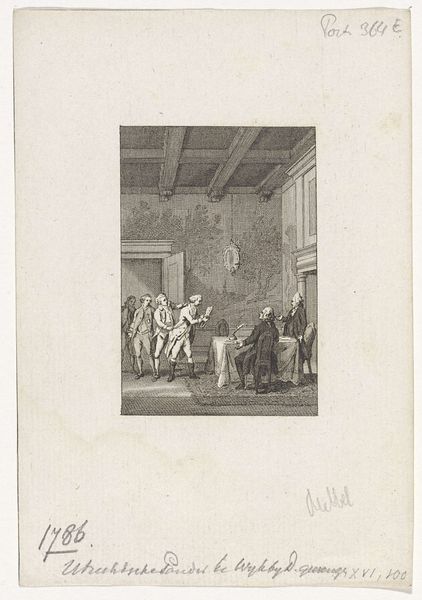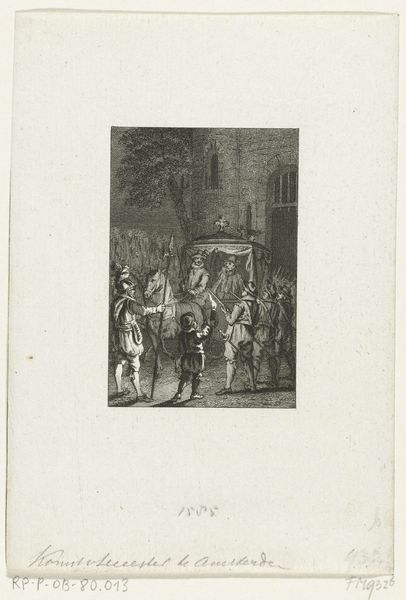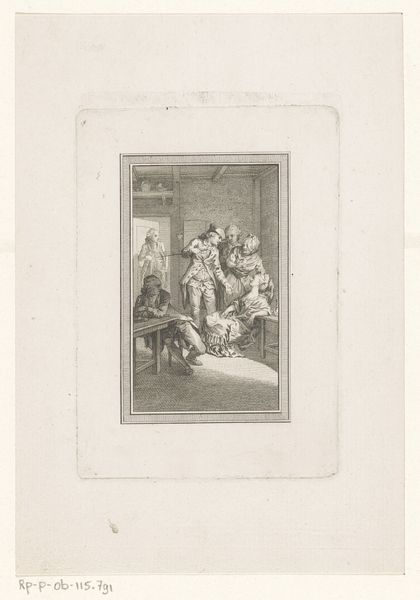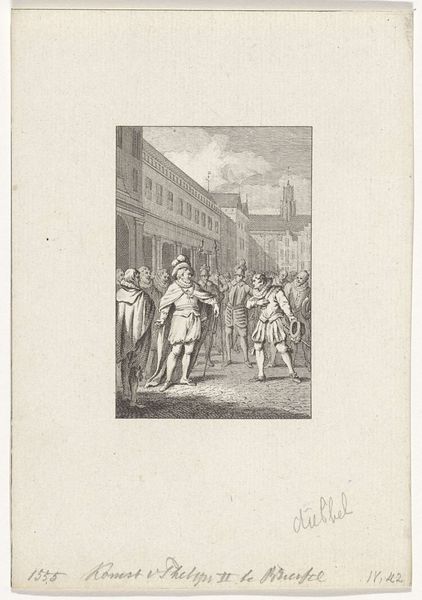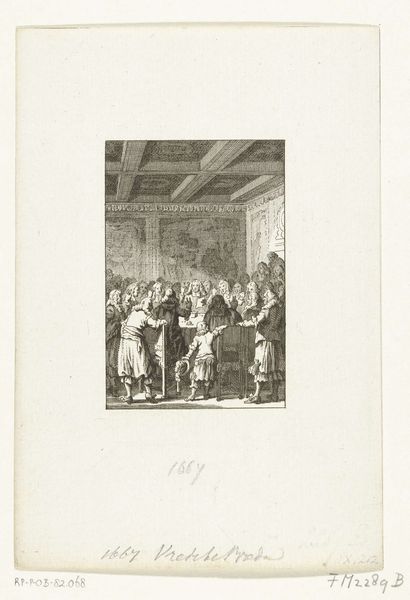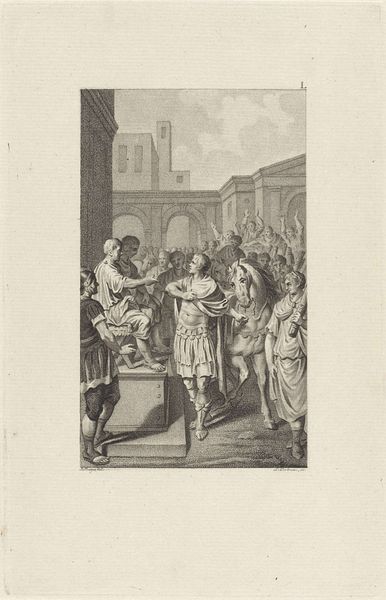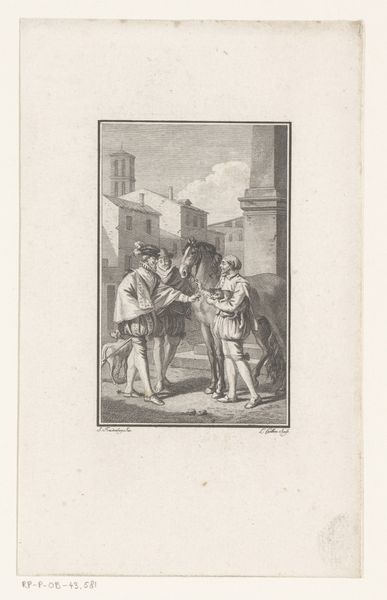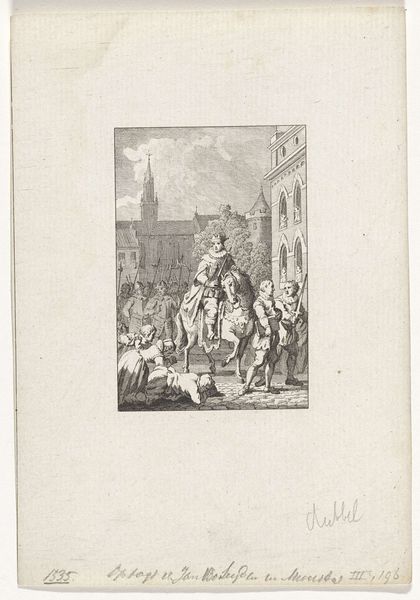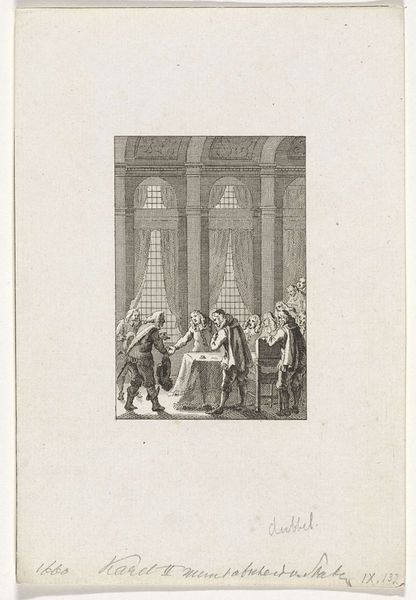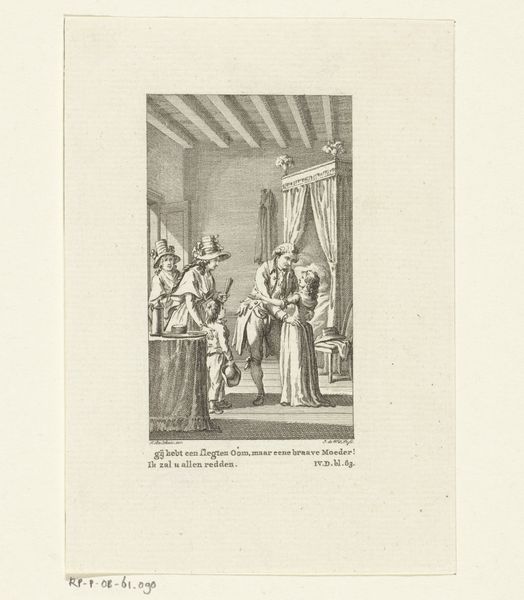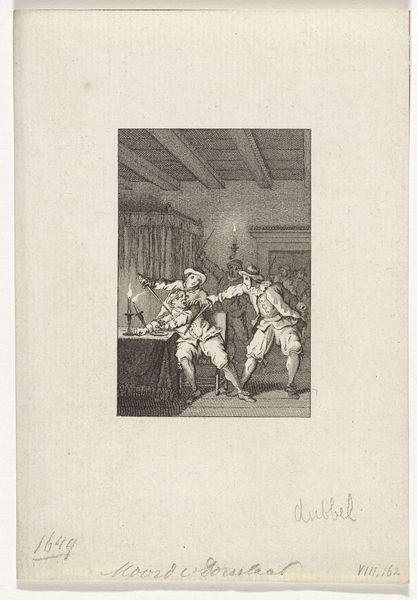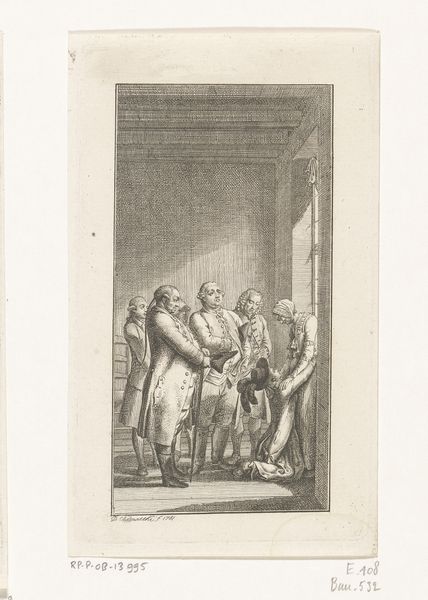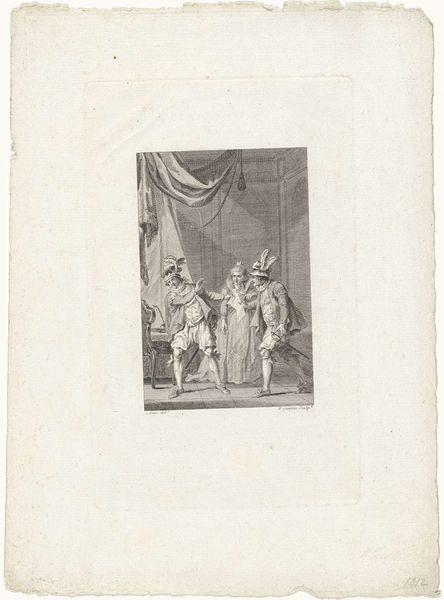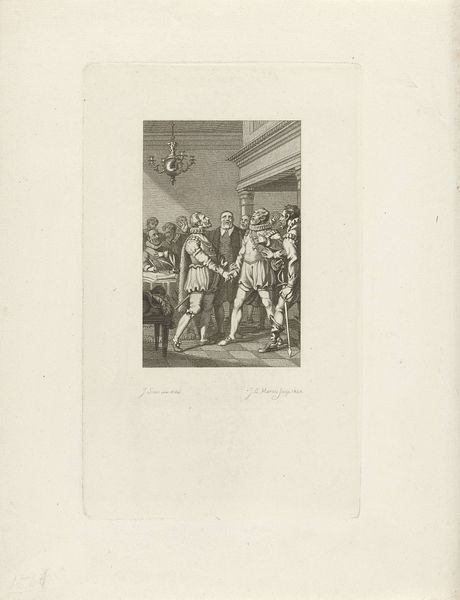
Dimensions: height 166 mm, width 112 mm
Copyright: Rijks Museum: Open Domain
Editor: So, this is "Drie Engelse koningsmoordenaars te Delft gevat, 1662," or "Three English Regicides Arrested in Delft, 1662," an engraving made by Reinier Vinkeles between 1780 and 1795. The scene feels… staged, theatrical almost, and stark due to the limited use of lines. What stands out to you about it? Curator: Indeed. This image encapsulates a potent moment of shifting power, visualized through the bodies and space depicted. Note how the regicides, those who signed Charles I's death warrant, are physically cornered. Does the act of capturing them resonate symbolically with ideas of justice, revenge, or perhaps even the precariousness of political ideals? Editor: I hadn't considered it that way. The men being apprehended certainly look distressed. Is there more to it than just a straightforward capture? Curator: Observe the details—their garments, gestures, the setting itself. What cultural echoes do you find? Think about the period, the symbols associated with royalty versus rebellion. This print wasn't created at the time of the event, but much later. Why recreate this event? What function does historical memory play here? Editor: That's interesting. It's like the artist is using symbols to remind people of a particular narrative, even years later. I suppose this work's realism masks underlying propaganda. Curator: Precisely. Images are rarely neutral carriers of information. They're actively shaping our understanding of history. Understanding the visual vocabulary helps us decode those messages. Editor: I'll definitely look at historical pieces with a more critical eye from now on. Thank you. Curator: A vital step in truly *seeing*, isn't it? Keep questioning those symbols.
Comments
No comments
Be the first to comment and join the conversation on the ultimate creative platform.
